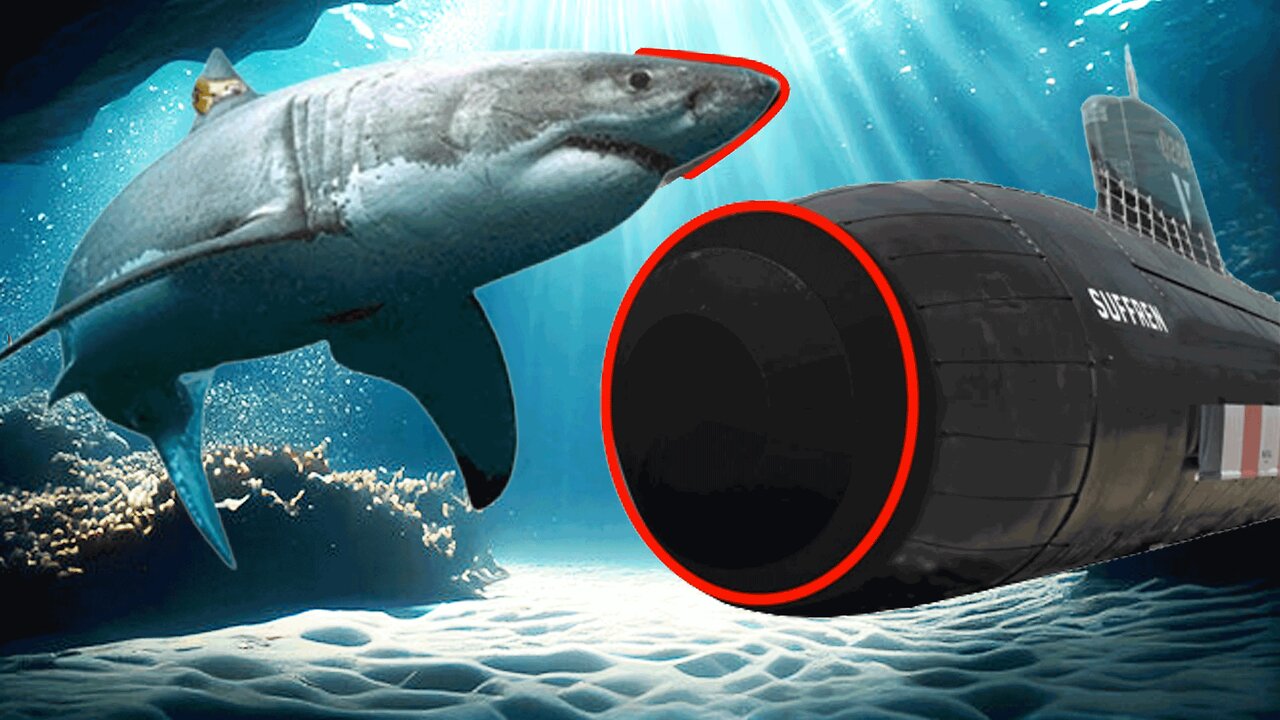Premium Only Content

The Mystery of Round Noses on Modern Submarines
Modern submarines have round noses, also known as bow shapes, primarily for hydrodynamic efficiency, reduced resistance, and improved maneuverability underwater. While the question of whether fish-like shapes are more efficient has been raised, the design of submarine bows involves a complex interplay of factors beyond mere hydrodynamic performance.
The primary reasons for the round nose design in modern submarines include:
Hydrodynamic Efficiency: Curved or rounded shapes generally experience less resistance as water flows around them. This principle helps submarines move more efficiently through the water, requiring less energy to maintain their desired speeds.
Reduced Flow Noise: Submarines generate flow noise as water moves around them, which can interfere with sonar systems' effectiveness. The rounded shape of the bow reduces turbulence and flow noise, enabling better detection of underwater sounds.
Improved Maneuverability: Round-nosed submarines tend to have better maneuverability, allowing them to perform agile movements, change directions quickly, and operate effectively in confined spaces.
Pressure Resistance: The shape of the bow affects how well a submarine can withstand water pressure at different depths. A rounded shape can distribute pressure more evenly, minimizing stress points on the hull.
Space for Equipment: The interior layout of submarines requires space for various equipment, including sonar systems, torpedo tubes, and ballast tanks. The rounded bow provides adequate space for housing these components while maintaining hydrodynamic efficiency.
Design Consistency: Modern submarines have evolved from designs influenced by naval architecture, engineering constraints, and a history of successful designs. This design consistency promotes predictability in performance and maintenance.
While a fish-like shape might appear more hydrodynamically efficient, the challenges of accommodating essential equipment within such a shape, along with considerations of stability, pressure resistance, and maintaining stealth, have led submarine designers to opt for rounded bow designs. The rounded bow strikes a balance between hydrodynamic performance, equipment integration, stability, and other operational requirements.
In summary, while fish have evolved their shapes over millions of years for optimal movement through water, modern submarines face a unique set of challenges and requirements. The rounded bow design has proven to be a practical solution that optimizes hydrodynamic performance, stability, and equipment integration for the specific operational needs of submarines.
-
 1:27:14
1:27:14
The Officer Tatum
3 hours agoLIVE: Trump and Elon BREAK INTERNET With BRAND NEW TESLA | Officer Tatum Show EP 78
29K24 -
 2:10:41
2:10:41
Adam Carolla
1 day agoCatalytic Converter Theft Turns Deadly + UPDATE! Rebuilding Malibu | Adam’s Wild Malibu Trip
16.2K9 -
 47:43
47:43
Russell Brand
6 hours agoWho’s Controlling the Narrative? Iran, Epstein, and the Fight Over Women’s Sports – SF552
139K81 -
 1:54:25
1:54:25
vivafrei
7 hours agoCanadian Premiers BUCKLE! "Gender" Wars in Congress! Madness in Seattle AND MORE! Viva Frei Live
75.1K92 -
 1:58:28
1:58:28
The Charlie Kirk Show
5 hours agoWhy The Left Hates Musk + Punishing Campus Antisemitism | Terrell | 3.12.25
103K23 -
 1:33:23
1:33:23
Simply Bitcoin
5 hours ago $3.15 earnedPlan To Buy 1M Bitcoin is BACK With A HUGE TWIST!! | EP 1201
52.6K1 -
 56:47
56:47
The Dan Bongino Show
7 hours agoSpending Bill Passes House And Everyone Loses Their Mind (Ep. 2440) - 03/12/2025
676K1.5K -
 3:43:02
3:43:02
Right Side Broadcasting Network
8 hours agoLIVE REPLAY: President Trump Holds a Meeting with the Taoiseach of Ireland - 3/12/25
118K15 -
 1:03:27
1:03:27
The Rubin Report
6 hours agoThe Exact Moment Bernie Has His Socialist Dream Crushed Into Dust
91.9K50 -
 1:56:59
1:56:59
Steven Crowder
8 hours agoTrump Keeps Winning | Rosie Flees, Ukraine Ceasefire Deal, Canada Backs Down & So Much More
519K339